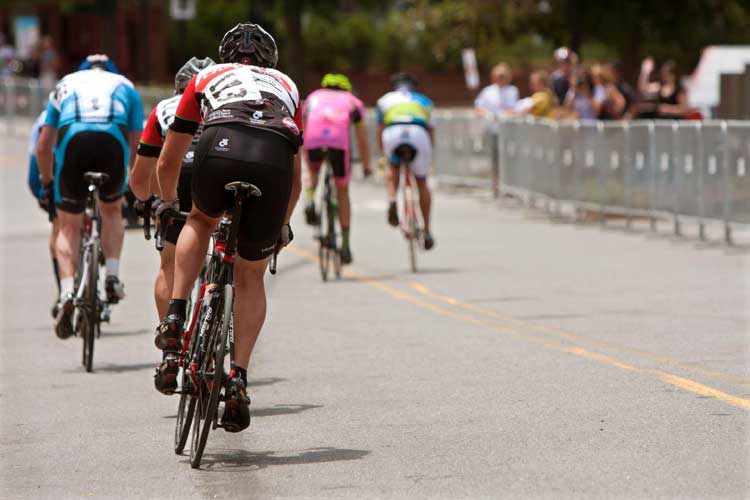Cycling is a great way to get exercise, but it can also be hard on your body. One common problem for cyclists is saddle sores, which can be painful and uncomfortable. Thankfully, there are many ways to treat saddle sore, and in this article we will explore 8 of them. So read on to find out how you can get relief from saddle sores. If you have been experiencing saddle sores, or are interested in preventing them, then this article is for you.
What are saddle sores?
Saddle sores are a condition caused by friction and pressure on the skin in the areas where the rider sits on the saddle. This can lead to irritation, chafing, and even open sores. Saddle sore is more common in cyclists who ride for long periods of time, but it can happen to anyone who rides a bike. They most often develop in three stages: skin abrasions, folliculitis, and abscesses. An abrasion is a skin injury caused by contact with an abrasive surface. Given proper treatment and time to heal, it will usually go away on its own. Folliculitis is an inflammation of the hair follicles; it often appears as one or more red bumps on the skin. If left untreated, folliculitis can develop into an abscess, which is a larger, pus-filled infection.
No products found.
As these sores develop, they become more painful and more difficult to treat. This means saddle sores are best treated early, as soon as they are noticed. So here are 8 ways to treat saddle sores, from home remedies to medical treatments.
1. Cleanliness is key
One way to treat a saddle sore is to gently clean the affected area with soap and water. This will help to remove any irritants that may be causing the sore. Don’t scrub too hard, as this can irritate the skin further. It is also important to dry the area thoroughly after washing it.
2. Gentle heat
Another way to treat a saddle sore is to apply a warm compress to the area. This can help to increase blood flow and speed up healing. To make a warm compress, simply wet a cloth with warm water, enclose it in a waterproof container, and apply it to the affected area.
No products found.
3. Cold therapy
If you are experiencing pain and inflammation, then you may want to try applying a cold compress to the area. This can help to reduce swelling and pain. To make a cold compress, wrap ice (or the classic frozen pea bag) in a cloth and apply it to the sore for 10-15 minutes at a time.
4. Systemic medications
There are many over-the-counter medications that can help to treat saddle sores. Pain relievers like ibuprofen or acetaminophen can also help to reduce pain and inflammation. Cannabis, a proven anti-inflammatory, may also help reduce symptoms. Some products offer systemic relief without the headier effects, something to consider if you’re comparing d8 and d9 THC.
No products found.
5. Topical ointments and chamois creams
There are many over-the-counter ointments and chamois creams that can help to treat saddle sores. Look for products that contain ingredients like menthol, aloe vera, or witch hazel, all of which can help to soothe the skin. Be sure to read the labels carefully and follow the directions for use.
This page contains affiliate links, where we get a commission if you decide to make a purchase through the links(at no cost to you) and helps support the site. As an Amazon Associate, we earn from qualifying purchases.
6. Keep the area dry
It is important to keep the area clean and dry, as moisture can worsen saddle sores. Proper undergarments can make a huge difference. When not riding, avoid wearing tight clothing that may rub against the sore. Instead, choose loose-fitting clothes made from breathable materials.
7. Don’t pop it
If you have an abscess, it is important not to try to pop it or squeeze it. This can spread the infection and make it worse. If the abscess does begin to drain on its own, be sure to clean the area with soap and water. You may also want to cover it with a bandage to keep the area clean and protected.
No products found.
8. Prevention
The best way to treat saddle sores is to prevent them from happening in the first place. Here are some tips to help you avoid these painful sores:
-
Choose the right saddle
One of the most important things you can do to prevent saddle sores is to choose the right saddle. This will vary depending on your body type and riding style. If you are not sure which saddle is right for you, ask a salesperson at your local bike shop.
-
Wear the right clothing
Another way to prevent saddle sores is to wear the right clothing. Padded shorts or a gel seat cover can also go a long way in preventing saddle sores.
-
Adjust your seat
If you are getting saddle sores, it may be because your seat is not adjusted properly. The height of your seat should be such that your leg is almost fully extended when the pedal is in the 6 o’clock position. The angle of your seat should also be adjusted so that you are not sitting too far forward or too far back.
-
Use chamois cream
Chamois cream is a thick, lubricating cream that helps to reduce friction between your skin and clothing. This can be a lifesaver for cyclists who are prone to saddle sores. Be sure to apply the cream liberally, and reapply as needed.
-
Stretch before and after riding
Stretching before and after riding can help to prevent saddle sores by increasing blood flow to the groin area. Be sure to focus on the muscles in your legs, hips, and lower back.
No products found.
The ‘bottom’ line
Saddle soreness is a common problem for cyclists, but there are many ways to treat it. In this article, we have outlined eight different ways to help soothe the pain and discomfort caused by saddle sores. We have also provided some tips on how to prevent saddle sores from developing in the first place. With the right treatment and prevention, you can enjoy your rides without pain or discomfort.
No products found.
Getting back in the saddle after experiencing saddle sores can be tough, but with proper treatment and prevention methods, it’s possible to continue riding comfortably. Likewise, players who are looking for casino without Swedish license options should consider user-friendly sites that offer fewer restrictions, allowing for more freedom and variety in gaming.
No products found.
















